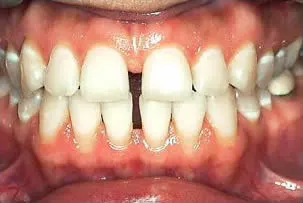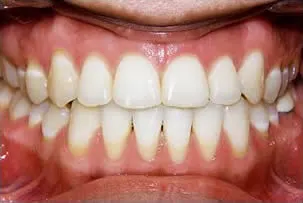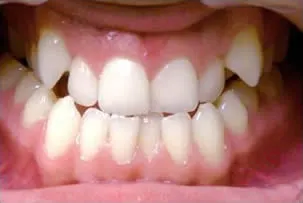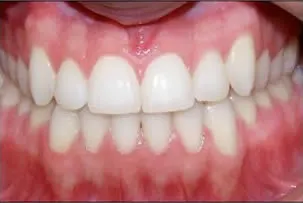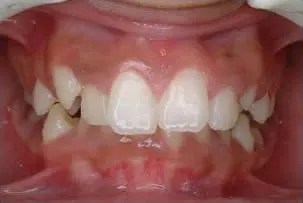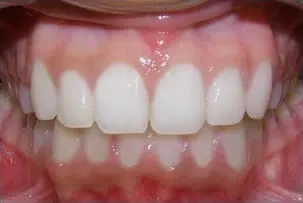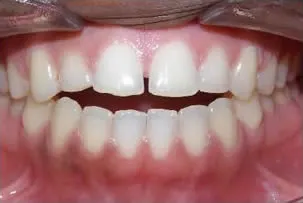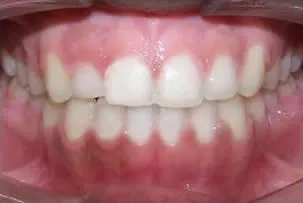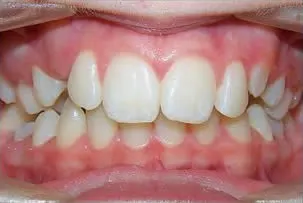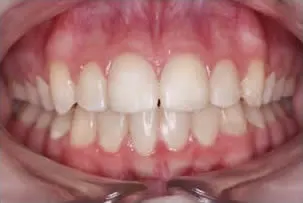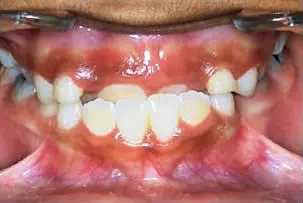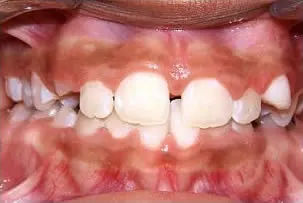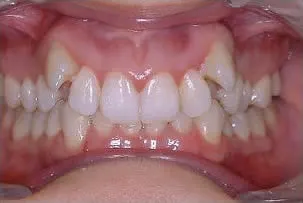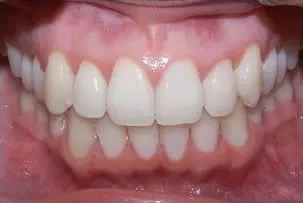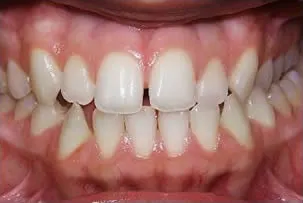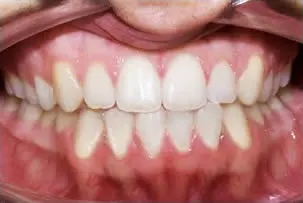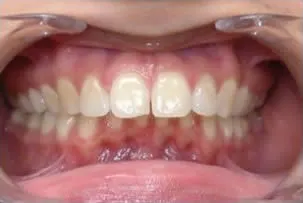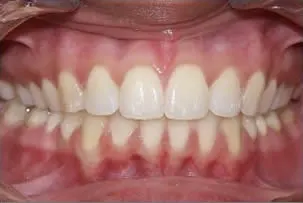Upper and lower spacing
Underbite, posterior crossbite, blocked out upper cuspids, upper crowding
Deep bite
Open bite
Impacted upper right cuspid / crowding
Phase 1 anterior crossbite / underbite
Upper crowding / blocked out upper cuspids
Unilateral posterior crossbite on left side
Deep overbite and excessive overjet / orthognathic surgery to bring lower jaw forward
“Buck” Teeth
“Buck” teeth problems occur when the upper jaw or teeth project ahead of the lower jaw/teeth. “Buck” teeth can be corrected using different appliances depending in the severity of the case.
Crossbite
When there is a crossbite of a single tooth or, in some cases, a couple of teeth, this is called a dental crossbite as opposed to a skeletal crossbite. Skeletal crossbites usually involve the palate bone and are discussed elsewhere on this Web site.
Crowded Teeth
Crowding of the teeth is a very common orthodontic problem. It is the most common problem associated with the need for orthodontic treatment. There are many factors that contribute to crowding the teeth. The main reason, however, usually stems from the lack of space available in the mouth compared to the size of the teeth. There are concerns associated with crowding other than the obvious aesthetic ones. Poor alignment of the teeth may lead to periodontal problems and increase the risk of dental decay. This is because it is harder to maintain proper oral hygiene with poor alignment.
“Fang” Teeth
“Fang” teeth usually occur when there is a lack of space for all of the permanent teeth to erupt in the dental arch. That is why you see the canines come in outside of the arch and usually higher than the rest of the dentition.
Openbite
Openbite occurs when front teeth do not overlap. A lack of vertical overlap of the incisor teeth can usually be traced to jaw disharmony or persistently bad habits. Digit sucking and posturing of the tongue between the front teeth should be avoided and discouraged at all costs. An openbite may also be caused by excessive vertical growth of one or both jaws. Early assessment and intervention with these disorders is critical to the overall success of the treatment.
Deep Overbite
Excessive vertical overlap of incisor teeth is generally found in association with a discrepancy between the length of the upper and lower jaws. It usually results in excessive eruption of either the upper or lower incisors or both. Problems may include: excessive display of gum tissue lip protrusion or entrapment biting the roof of the mouth incisor wear.
Spaces
Spacing between teeth is another common problem associated with the need for orthodontic care. Spaces open up between teeth when the teeth are not big enough to fill up the jaw. It is the opposite of crowding. Spaces may also be due to gum tissue attachments between the front teeth. There are other contributing factors such as missing teeth and excessive vertical overlap of the front teeth. We can use orthodontics to resolve most spacing problems.
Thumb Sucking
Children suck on their thumb to feel secure. A baby who sucks on his/her thumb or fingers is completely normal. However, when a child does not stop by the time permanent teeth come in, problems can arise. Often, the upper front teeth will come in at an improper angle. Teeth may tip out of natural alignment toward the upper lip. The best way to stop your child from these habits is through parental advice and a orthodontist’s encouragement. Usually, all the child needs is to understand the consequences of his or her habits. The parent can supply that. If the problem is severe and cannot be broken initially, an orthodontist may need to make an appliance that makes it uncomfortable to the child when sucking his/her thumb. With a little guidance, a child can easily correct the habit.
Underbite
Class III cases, like Class II, are often originated from genetics. Class III conditions are commonly referred to as underbites. This is the opposite of an overbite. In this case, the lower jaw and teeth are pushed out in front of the upper jaw. The lower jaw appears to be excessively large, but often the upper jaw is underdeveloped. The orthodontist can use appliances to correct these problems as long as the problem is diagnosed early enough. If left untreated, the problem may worsen and may require orthognathic (jaw) surgery. Due to individual variations in each patient’s condition and response to treatment, the outcome of the final results maybe slightly different.

